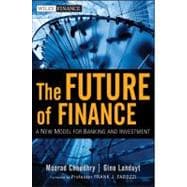
Note: Supplemental materials are not guaranteed with Rental or Used book purchases.
Purchase Benefits
What is included with this book?
Moorad Choudhry has over twenty-one years experience in investment banking and was latterly head of treasury at Europe Arab Bank. He was previously head of treasury at KBC Financial Products and vice president in structured finance services at JPMorgan Chase Bank. Dr. Choudhry is Visiting Professor at the Department of Economics, London Metropolitan University, and Senior Research Fellow at the ICMA Centre, University of Reading. He is a Fellow of the ifs-School of Finance and a Fellow of the Chartered Institute for Securities and Investment. He is on the Editorial Board of the Journal of Structured Finance and the Editorial Advisory Board of American Securitization.
Gino Landuyt is Head of Sales at Conduit Capital in London. Prior to that, he was head of insti-tutional structured sales at ING Bank in Brussels, and worked with KBC Bank N.V. in their Brussels, Frankfurt, New York, and London offices. Landuyt has an MA in applied economic sciences from the State University of Antwerp and an MBA from the Catholic University of Antwerp.
| Foreword | p. xi |
| Preface | p. xiii |
| Introduction | p. xix |
| Market Instability | p. xx |
| Derivatives and Mathematical Modeling | p. xxi |
| Senior Management and Staying in the Game | p. xxiii |
| Macroprudential Financial Regulation and Cycle-Proof Regulation | p. xxiii |
| The Way Forward | p. xxv |
| Conclusion | p. xxvi |
| A Review of the Financial Crash | p. 1 |
| Globalization, Emerging Markets, and the Savings Glut | p. 3 |
| Globalization | p. 3 |
| A Series of Emerging-Market Crises | p. 5 |
| Low-Yield Environment Due to New Players in the Financial Markets | p. 8 |
| Artificially Low Exchange Rates | p. 15 |
| Recommendations and Solutions for Global Imbalances | p. 16 |
| The Rise of Derivatives and Systemic Risk | p. 22 |
| Systemic Risk | p. 23 |
| Derivative Market Systemic Risk: Solutions for Improvement | p. 30 |
| The Too-Big-to-Fail Bank, Moral Hazard, and Macroprudential Regulation | p. 37 |
| Banks and Moral Hazard | p. 37 |
| Addressing Too-Big-to-Fail: Mitigating Moral Hazard Risk | p. 42 |
| Macroprudential Regulation: Regulating Bank Systemic Risk | p. 53 |
| Conclusion | p. 58 |
| Corporate Governance and Remuneration in the Banking Industry | p. 60 |
| Bonuses and a Moral Dilemma | p. 60 |
| A Distorted Remuneration Model | p. 61 |
| Unsuitable Personal Behavior | p. 64 |
| Conclusion | p. 65 |
| Bank Capital Safeguards: Additional Capital Buffers and Reverse Convertibles | p. 67 |
| Capital Issues in a Bear Market | p. 67 |
| Looking for New Capital Instruments | p. 69 |
| Economic Theories under Attack | p. 76 |
| A Belief in Free and Self-Adjusting Markets | p. 76 |
| Modigliani and Miller | p. 85 |
| Markowitz and Diversification Tested | p. 85 |
| Minsky Once Again | p. 88 |
| Lessons to Be Learned by Central Banks | p. 89 |
| Conclusion | p. 92 |
| New Models for Banking and Investment | p. 93 |
| Long-Term Sustainable Investment Guidelines | p. 95 |
| The Investment Landscape after the Crisis | p. 95 |
| Government Debt and Demographics | p. 97 |
| A New Economic Environment | p. 103 |
| The Inflation Dragon | p. 105 |
| Currencies and a Changing Geopolitical Landscape | p. 115 |
| Exchange-Traded Funds: A Flexible Asset Class | p. 118 |
| Conclusion | p. 121 |
| Rank Asset-Liability and Liquidity Risk Management | p. 123 |
| Basic Concepts of Bank Asset-Liability Management | p. 123 |
| Asset and Liability Management: The ALCO | p. 134 |
| ALCO Reporting | p. 137 |
| Principles of Banking Liquidity Risk Management | p. 142 |
| Measuring Bank Liquidity Risk: Key Metrics | p. 145 |
| Internal Funding Rate Policy | p. 151 |
| Conclusion | p. 157 |
| A Sustainable Bank Business Model: Capital, Liquidity, and Leverage | p. 158 |
| The New Bank Business Model | p. 158 |
| Corporate Governance | p. 167 |
| Liquidity Risk Management | p. 168 |
| The Liquid Asset Buffer | p. 175 |
| Conclusion | p. 177 |
| Notes | p. 179 |
| References | p. 187 |
| About the Authors | p. 189 |
| Index | p. 191 |
| Table of Contents provided by Ingram. All Rights Reserved. |
The New copy of this book will include any supplemental materials advertised. Please check the title of the book to determine if it should include any access cards, study guides, lab manuals, CDs, etc.
The Used, Rental and eBook copies of this book are not guaranteed to include any supplemental materials. Typically, only the book itself is included. This is true even if the title states it includes any access cards, study guides, lab manuals, CDs, etc.